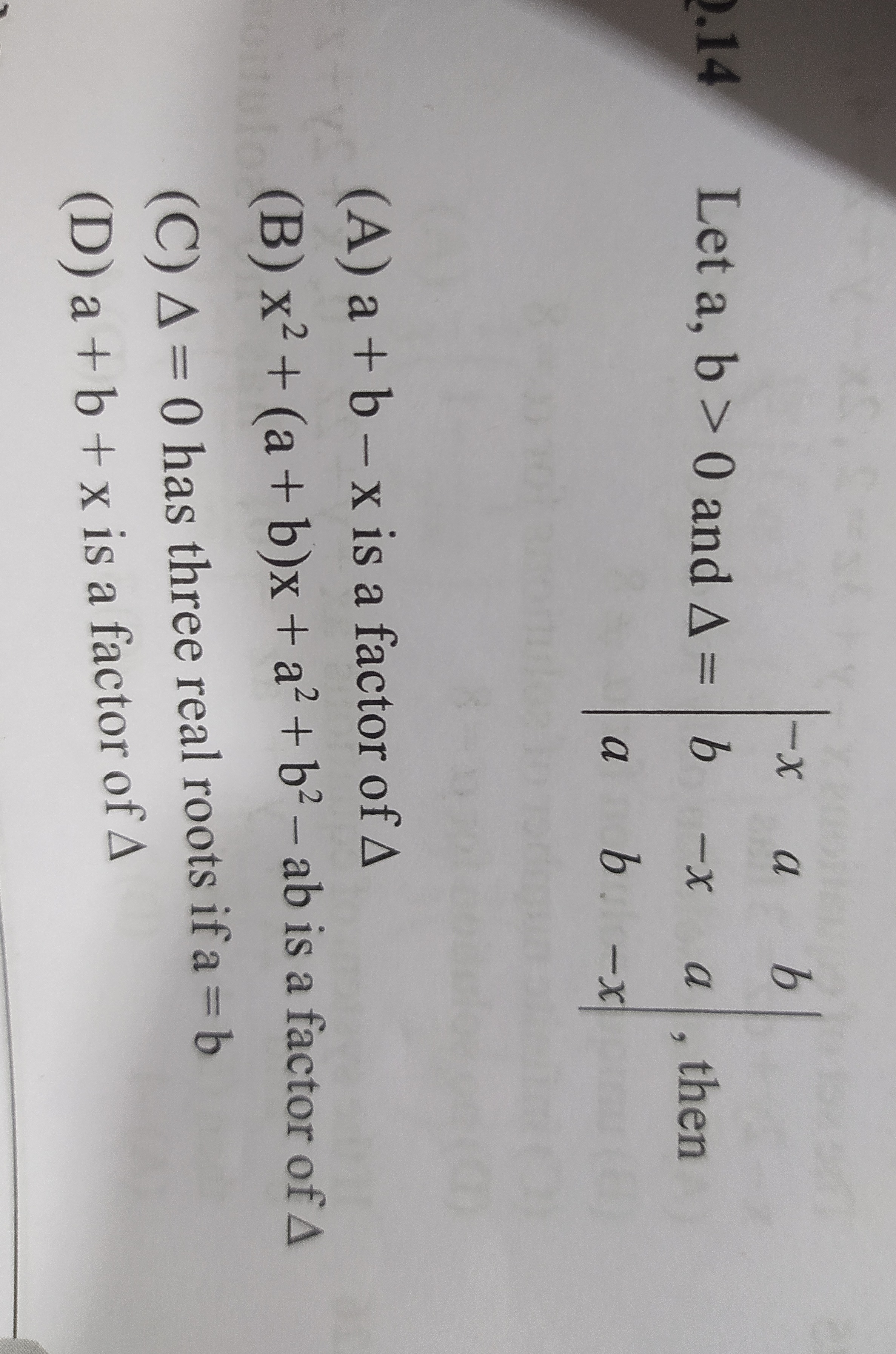Question
Question: Let a, b > 0 and $\Delta = \begin{vmatrix} -x & a & b \\ b & -x & a \\ a & b & -x \end{vmatrix}$, th...
Let a, b > 0 and Δ=−xbaa−xbba−x, then

A
a + b - x is a factor of Δ
B
x2+(a+b)x+a2+b2−ab is a factor of Δ
C
Δ = 0 has three real roots if a = b
D
a + b + x is a factor of Δ
Answer
Options (A), (B), and (C) are correct.
Explanation
Solution
Solution:
We are given
Δ=−xbaa−xbba−x.Step 1. Expand the Determinant
Expand along the first row:
Δ=(−x)−xba−x−abaa−x+bba−xb=(−x)[(−x)(−x)−a⋅b]−a[b(−x)−a⋅a]+b[b⋅b−(−x)⋅a]=(−x)[x2−ab]−a[−bx−a2]+b[b2+ax]=−x3+abx+abx+a3+b3+abx=−x3+3abx+a3+b3.Step 2. Factorize the Cubic
Notice that
a3+b3=(a+b)(a2−ab+b2).Test x=a+b:
Δ(x=a+b)=−(a+b)3+3ab(a+b)+a3+b3.Since
(a+b)3=a3+3a2b+3ab2+b3,we have:
Δ(x=a+b)=−[a3+3a2b+3ab2+b3]+3ab(a+b)+a3+b3=0.Thus, (a+b−x) is a factor. Dividing, we obtain:
Δ=(a+b−x)[x2+(a+b)x+(a2−ab+b2)].Step 3. Analyze the Options
- Option (A): Since a+b−x is a factor, (A) is correct.
- Option (B): The quadratic factor is x2+(a+b)x+(a2−ab+b2) which matches the given expression, so (B) is correct.
- Option (C): For a=b (say a=b=c>0), the factors become: a+b−x=2c−xandx2+2cx+(c2−c2+c2)=x2+2cx+c2=(x+c)2. Thus, Δ=(2c−x)(x+c)2, giving roots x=2c and x=−c (a repeated root). All roots are real. Hence, (C) is correct.
- Option (D): Testing x=−a−b does not yield zero in general, so (D) is false.
Final Answer: Options (A), (B), and (C) are correct.
Core Explanation:
- Compute Δ=−x3+3abx+a3+b3.
- Factorize as Δ=(a+b−x)[x2+(a+b)x+(a2−ab+b2)].
- For a=b: Δ=(2a−x)(x+a)2, hence three real roots.
